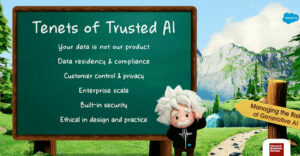What a difference a decade makes. It seems only about that long ago that vendors were wrestling with providing the rudiments of automated triage for customer service. It was not often pretty, but they kept at it. Good thing, too.
The websites dedicated to service weren’t very good back then. They either couldn’t help at all, in which case you’d be put into the regular phone queue, or they’d run you in a circle until you gave up — and if you were the obstinate type, you could find yourself disengaged from the service center with a 404 error.
It was so bad I remember reading a paper about service preferences by demographic. Not surprisingly, the older demos were least interested in messing around with the systems they knew could not help them, and they skewed toward just getting into the phone queue and ordering a pizza if necessary to wait it out. Perhaps not surprisingly, companies that realized this made sure to play music on hold from when those people were teenagers.
Modern Advances in Customer Service
Today, things are different. Service sites can speak to customers and perform triage without risking a 404. Some can even take things further if customers have the patience to request and navigate — service orgs have learned the value of spinning up a new process to deal with an emerging problem.
In all this time, you could reasonably say that the CRM community was working to optimize the customer and the way the customer worked within its service paradigm.
About a couple of years ago it occurred to me that service apps had become so sophisticated and successful that we hit a point where customer optimization was no longer possible. In math terms, I’d say we had closely approached an asymptote. At that point, it becomes prohibitively expensive in effort and treasure to go further, and you need to try a new approach.
Challenges in Modern CRM
So now the ball is in the other court; here’s why. During the time when we were optimizing the customer, an increasing proportion of really hard cases filtered through to the call center. It has been obvious for some time that with most of the easy issues now handled by technology, there were only hard nuts left to crack. Those nuts require more effort, ingenuity, and certainly information.
Simply put, CRM systems must supply service agents with more and better information.
Not long ago, I did some research for Oracle that discovered service agents would typically be working in upwards of eight different applications on their desktops at once, sometimes also including their phones.
I haven’t mentioned it yet, but many companies have not updated their service software as often as needed, resulting in all those apps being open. It fell to the agents to synthesize all that data into solutions. I only joke at this, but it makes me think that the ideal training for an air traffic controller might be to become a service pro in an old-line company. Okay, maybe it’s not a joke.
Salesforce’s New Solution: Service Intelligence
So, imagine my delight in hearing that Salesforce launched Service Intelligence, a new app for Service Cloud powered by Salesforce’s Data Cloud. Service Intelligence enables users to close seven of those eight apps and instead focus on included service dashboards along with Service Cloud’s recommendations.
As is often the case with new technologies, the hardest thing for new users to do is to set up the product so that it provides some value. This not being Salesforce’s first effort, the app comes with pre-built service dashboards.
Where agents once had raw data staring at them from eight windows or screens, they now have AI-powered insights and key metrics. Some of this isn’t immediately useful to the agent involved because the metrics include things like escalated cases, average time to close, and, well, you get it, the same stuff we’ve been seeing.
AI-Driven Customer Service Analysis
However, it gets more interesting because things like Einstein Conversation Mining use AI to analyze customer conversations. The analysis helps agents see through the service demand to identify patterns they may be able to address more quickly en mass. Also, Tableau integration enables managers to generate visual renderings of the data to drive faster resolution.
That’s all generally available today, and admittedly, it seems tilted toward managers. What’s coming shortly may be more useful to users. Einstein Copilot enables users to question dashboards and metrics in natural language (without getting a 404 error, lol!). Look for this in the spring.
Also coming in the spring, Einstein Studio will provide AI-generated insights to identify things like a customer’s propensity to escalate and the time likely needed to resolve a case, along with scoring the effort that is likely needed.
When you combine these tools with Service Cloud’s AI-based tools for getting the right answers to customers, it’s a lot. It’s certainly better than having eight screens/apps open simultaneously and trying to ride herd on all that data.
Landing a passenger jet is still more difficult than doing customer service, especially given the decades-old computer systems that run our air traffic control system today. Given some of the near-miss stories percolating, I don’t think it should be that way. Hey, Salesforce, got anything for aviation?

























































